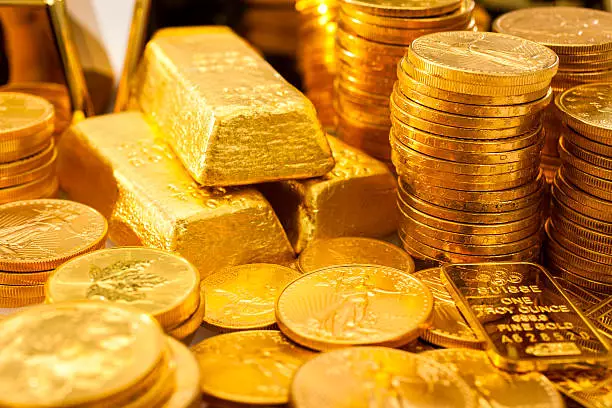In recent financial headlines, gold prices have surged dramatically, eclipsing the $2700 per ounce mark, driven primarily by an amalgamation of economic and geopolitical factors. This rally seems to find its roots in the anticipation of global interest rate cuts and the rising tensions in the Middle East, particularly surrounding Israel and Iran. As investors scramble for safe-haven assets amidst uncertainty, the allure of gold appears stronger than ever.
The London Bullion Market Association has also contributed to the bullish sentiment by forecasting a price of $2941 per ounce within the next year. This prediction, while optimistic, underlines the prevailing sentiment that gold may still have room to grow, irrespective of technical indicators signaling that the asset might currently be overbought. As the market grapples with these dynamics, understanding the interplay between economic factors and geopolitical events becomes crucial for investors.
The political landscape in the Middle East is undoubtedly one of the critical drivers behind the sustained interest in gold. The recent killing of Hamas’s Political Bureau leader and key figures involved in the October 7 attacks has heightened the chances of an escalation in violence. This development has intensified fears of broader conflicts and has prompted investors to seek security in gold. Historically, periods of geopolitical unrest tend to push gold prices upward, as the precious metal is viewed as a stalwart against instability.
This current geopolitical climate underscores gold’s role as a safe haven, especially as the potential for military action looms. The immediacy of threats, such as retaliatory strikes possibly coming from Israel, further solidifies the precious metal’s attractiveness during these turbulent times.
Market reactions to economic data globally contribute to the overall context of gold trading. Recent reports from the United Kingdom and the discussions surrounding the European Central Bank’s interest rate meetings play a significant role in shaping expectations for impending rate cuts. When interest rates fall, the opportunity cost of holding non-yielding assets like gold decreases, making gold investments more appealing. Consequently, the expectation of lower rates might continue to fuel market enthusiasm for the yellow metal, as investors flock to it as a protective measure against inflation and currency depreciation.
In this environment, understanding the correlation between economic indicators and market performance is pivotal for traders. While some analysts have anticipated a reversal or pullback in gold prices based on technical analysis, macroeconomic conditions may continue to outweigh these technical signals for the foreseeable future.
Despite the optimistic outlook, technical analysis reveals that gold may indeed be in overbought territory according to the Relative Strength Index (RSI) on multiple time frames, including four-hour, daily, and weekly charts. This situation often sets the stage for a correction, as profit-taking behaviors become more frequent. However, underlying supportive geopolitical factors present a buffer against significant downside movement in prices.
Immediate support for gold prices currently lies at the $2700 mark, with further levels of interest at $2685 and $2673. Meanwhile, short-term resistance is calculated around $2717, with subsequent levels at $2725 and $2750. Traders are likely to watch these key levels closely, as any breach could signify a new trend or a reversal in the market’s current trajectory.
Looking ahead, the interplay of geopolitical factors and the economic environment will likely dictate future gold price movements. The nearing U.S. presidential elections introduce additional layers of uncertainty, which could feed into the demand for secure assets like gold. As liquidity concerns and market volatility remain prevalent, gold’s defensive nature positions it favorably.
While the technical outlook casts some caution on gold’s future price trajectory, the robust combination of geopolitical uncertainties, expectations of global rate cuts, and the long-standing tradition of gold as a safe haven suggests that the rally may not yet be over. For traders and investors, remaining vigilant and adaptable to rapid changes in both market sentiment and external events will be paramount in navigating the complex landscape surrounding gold pricing.

